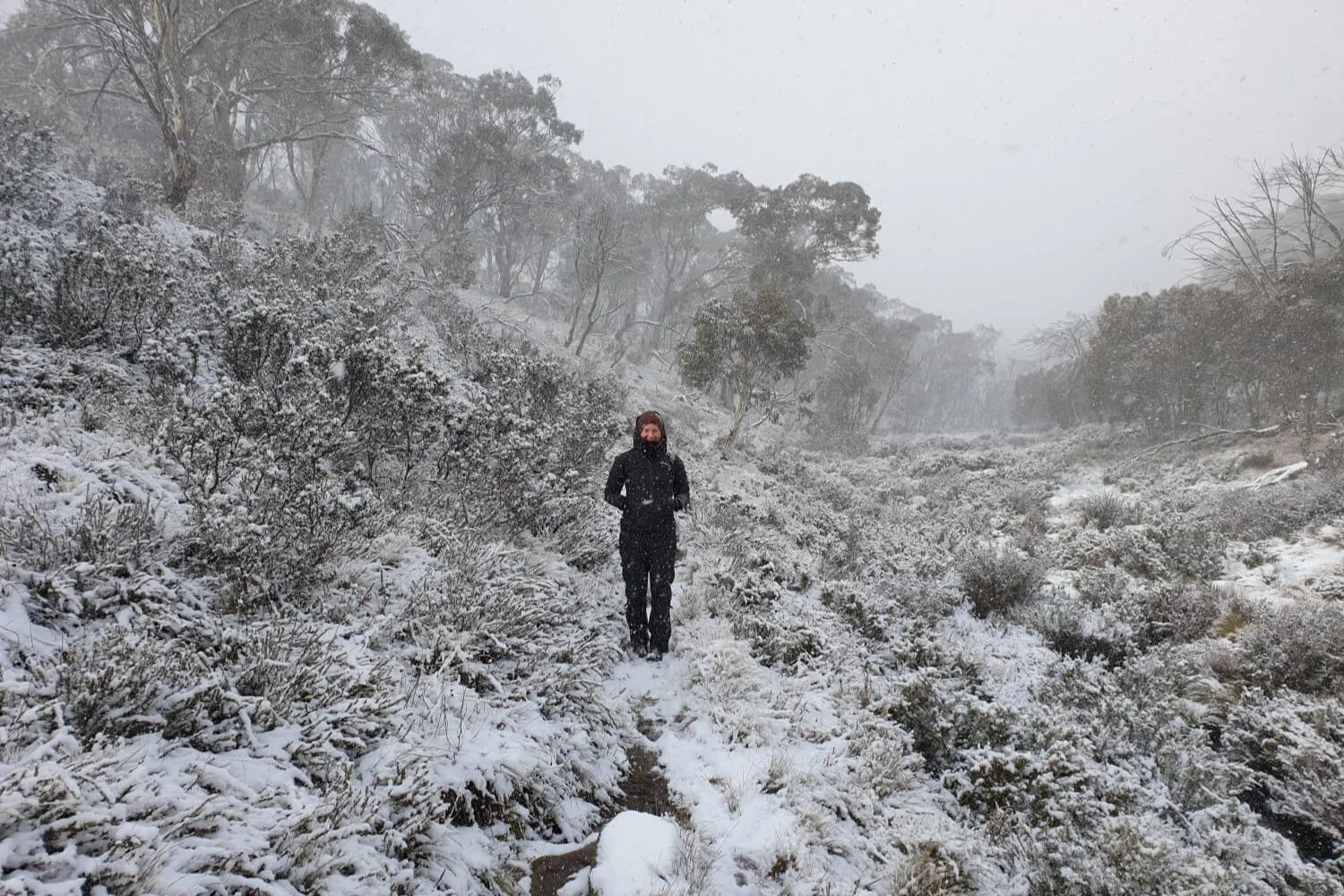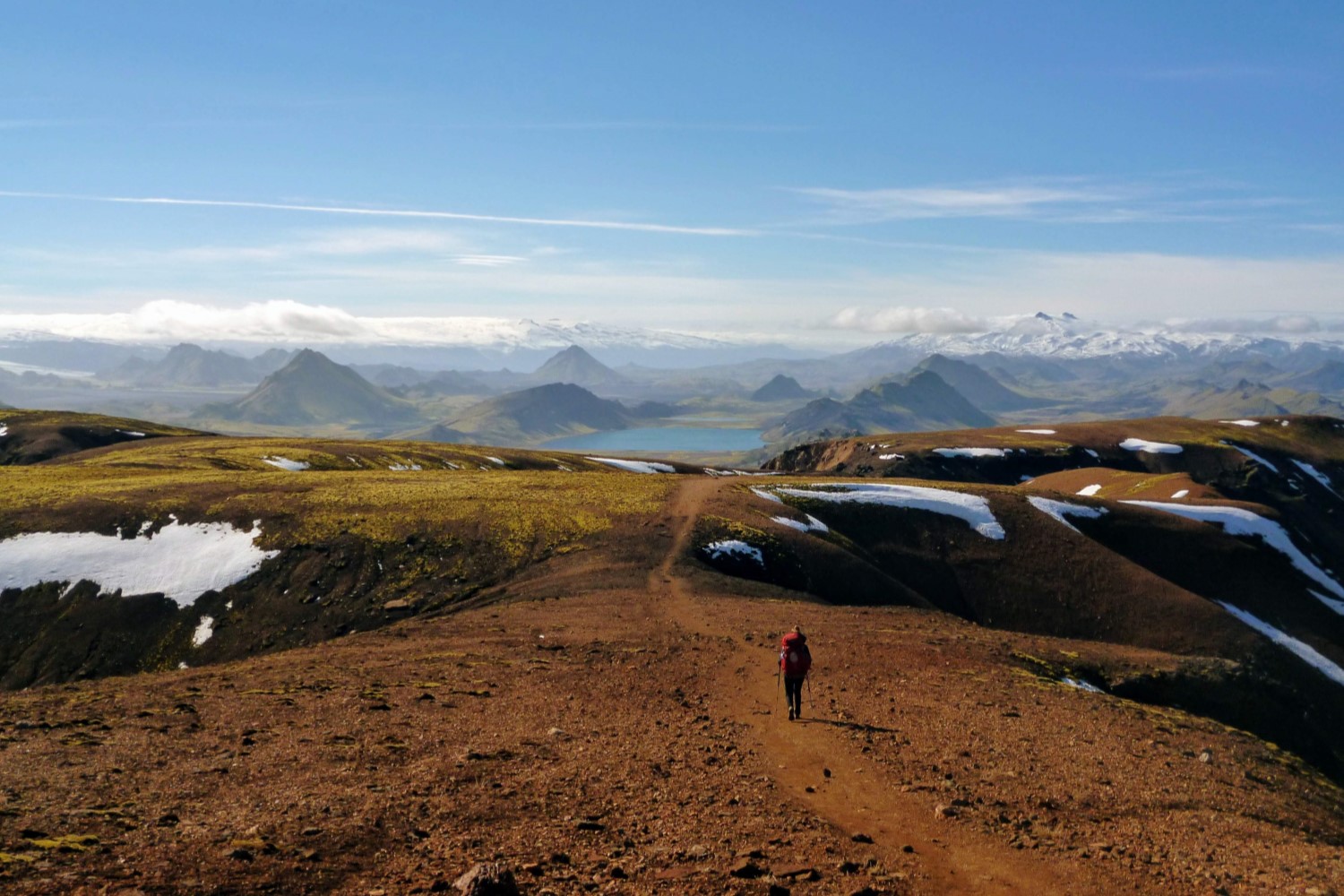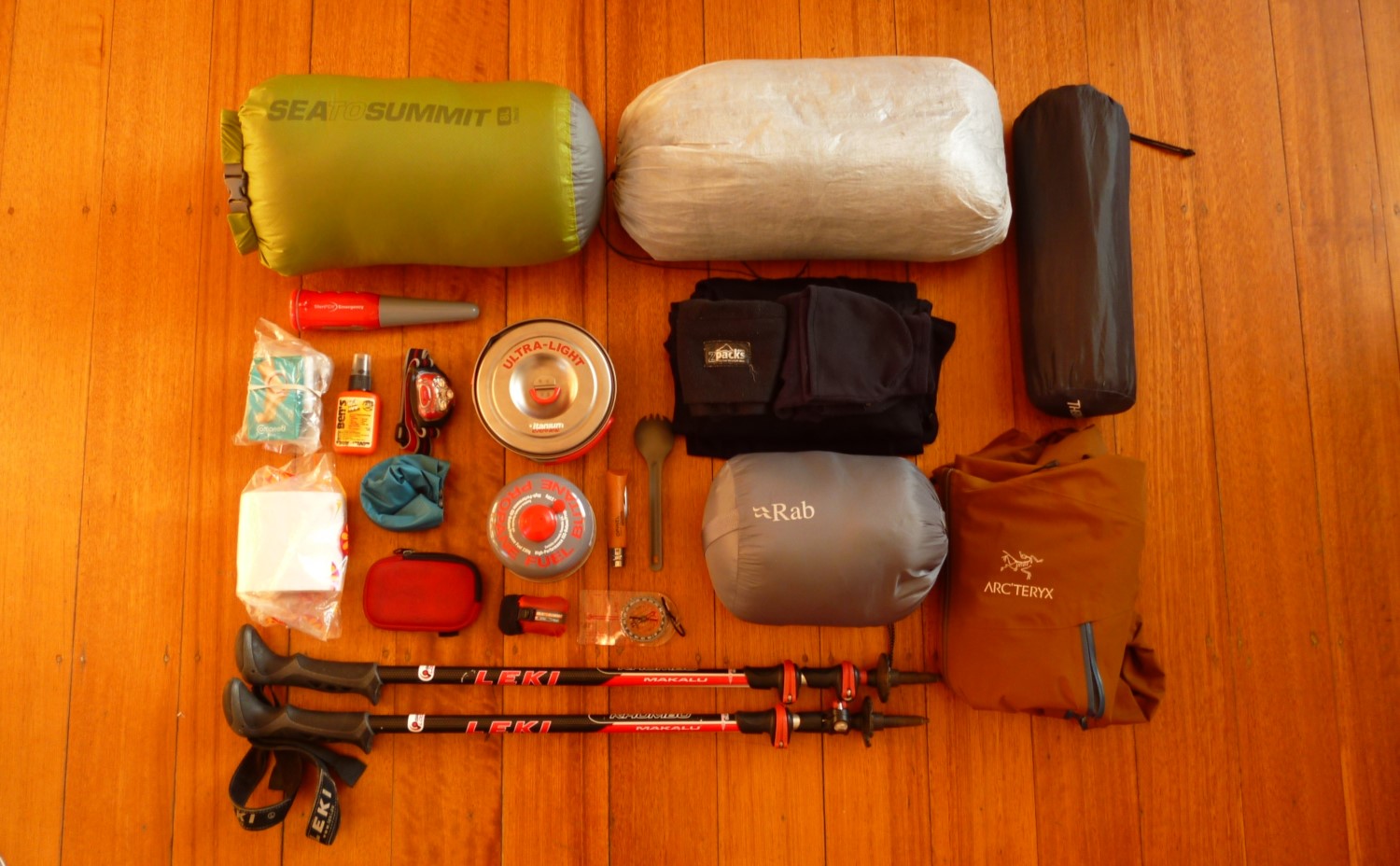Best Winter Hiking Socks of 2023
JUMP TO: DARN TOUGH HIKER / SMARTWOOL PERFORMANCE HIKE / DARN TOUGH MOUNTAINEERING / FARM TO FEET DENALI / REI CO-OP MIDWEIGHT / WRIGHTSOCK ECO HIKE / SEAL SKINZ COLD WEATHER / BUYING ADVICE
Author: Sam Brilleman
The Short Version
Best Overall: Darn Tough Hiker Boot Full Cushion
Runner Up Overall: Smartwool Performance Hike
Best for Cold Conditions: Darn Tough Mountaineering Merino Wool
Runner Up for Cold Conditions: Farm to Feet Denali
Best on a Budget: REI Co-op Midweight
Best Anti-Blister Socks: Wrightsock Eco Hike Wool
Best Waterproof Socks: Seal Skinz Cold Weather Mid Length
The Long Version
Winter is a stunning time of year to go hiking — a blanket of snow or hard frost can give the world an ethereal beauty.
But with winter comes an even greater need for appropriate gear. Not least, clothing that will keep you warm and comfortable in the cold conditions.
… And your feet are arguably the most important part of your body for hiking!
A good pair of winter hiking socks will keep your feet dry, warm, and blister free, allowing you to get more enjoyment out of your hike.
Of course, you might be tempted to throw on any old pair of thick socks and hope for the best. But unfortunately that might not be a great idea. Trust me… I have been there.
Luckily, there is a decent range of high quality cold-weather socks out there in the market. And to help you spend less time browsing, and more time out walking in the winter wonderland, we’ve put together this guide to the best winter hiking socks.
If you love reading this review of the best winter hiking socks, then you'll likely love reading some of our other hiking and backpacking content:
Need To Know What To Look Out For?
Socks might serve a fairly simple function, but there a few things that make some better for certain activities. If you aren’t sure about materials, odor resistance, or anything else while browsing, then be sure to check out our buying advice at the bottom of the page.
Best Overall: DARN TOUGH HIKER FULL CUSHION
MATERIALS: 66% Merino, 32% Nylon, 2% Lycra spandex
CUSHION: Heavy
HEIGHT: Crew
PRICE: $$
PROS: Comfortable, Great cushioning, Lifetime warranty
CONS: Higher price
The Darn Tough Hiker Full Cushion is a real winner when it comes to winter hiking. Like many of our top picks, it is made predominantly of merino wool -- one of the best materials for providing both insulation and breathability. These socks also have a smaller amount of nylon and lycra, which help with durability (since pure merino doesn’t have the greatest lifespan) and shape (the lycra helps ensure a snug fit around your foot – key to avoiding blisters, hot spots, and preventing bunching up).
They are the perfect all-rounder if you are looking for a sock for general winter use. The combination of merino and synthetic materials makes them warm, but also decent with moisture management and relatively quick drying, if they happen to get wet.
The Darn Tough Hiker comes standard as a crew length sock, which means it will sit right around your calf – an ideal length for use with winter hiking boots. Plus, the sock is a full, or heavy cushioning, which means that areas of high stress like the heel have added protection. This makes the Darn Tough socks harder wearing and also adds extra insulation.
They are competitively priced given the quality and Darn Tough’s lifetime warranty. But if budget is your main concern, then you might need to be looking elsewhere.
Runner Up Overall: SMARTWOOL PERFORMANCE HIKE
MATERIALS: 56% Merino Wool, 31% Recycled Nylon, 11% Nylon, 2% Elastane
CUSHION: Medium
HEIGHT: Crew
PRICE: $$
PROS: Use of recycled materials, Ergonomic design that provides a great fit
CONS: Lower use of merino wool
The Smartwool Performance Hike features a smart ergonomic design that provides a solid secure fit for hiking. This will prevent the sock sliding around or bunching up in your boot, helping to keep your feet happy and blister free all day whilst on the trail. Plus, they use a seamless design meaning you won’t get a hot spot halfway through your hike.
This sock is a redesign of a previous model, with the newer model making improvements in fits, durability, and the use of more sustainable materials. On this sock Smartwool have used recycled nylon and ZQ certified merino wool, which helps protect the environment. The cushioning is not as heavy as some of the other socks on this list. However, they have distributed the padding to areas of the sock where it is most needed, improving both comfort and warmth.
Also, the Performance Hike do have a slightly lower percentage of merino than some of the other socks on this list, but the difference is likely to be negligible for practical purposes. Especially given that you wouldn’t be wearing these in seriously frigid conditions.
Extreme cold aside, the fit and quality of the Smartwool Performance Hike makes them an awesome pick for your general winter hiking adventures.
Best for Cold Conditions: DARN TOUGH MOUNTAINEERING MERINO WOOL
MATERIALS: 73% Merino Wool, 25% Nylon, 2% Lycra Spandex
CUSHION: Heavy
HEIGHT: Over the calf
PRICE: $$
PROS: Great for use in extreme cold
CONS: Too warm for milder conditions
If you are a serious mountaineer, then you are going to need a serious sock. And the Darn Tough Mountaineering Merino Wool is a great choice if you find yourself in extremely cold conditions.
It is made predominantly from merino wool, which is exactly what you want for an extreme cold weather sock. Similarly, the heavy weight and full cushion design is a massive advantage, as it will keep your feet comfortable and warm in your boots.
Darn Tough use a tight knit stitch for all their socks. This makes them very warm but also exceptionally tough, and their mountaineering sock is no exception.
Their mountaineering sock is a much longer sock, covering up and over the calf, and thereby helping to create a more effective barrier between you and the elements.
In milder conditions it will likely be too warm – this sock is designed for serious cold, so in warmer temperatures you might find your feet begin to overheat.
But if you are the type of hiker that likes to push for big miles in very cold climates, then this sock is the best choice for you.
Runner Up for Cold Conditions: FARM TO FEET DENALI
MATERIALS: 91% Merino Wool, 8% Nylon, 1% Lycra Spandex
CUSHION: Heavy
HEIGHT: Extended Crew
PRICE: $$
PROS: High percentage of merino wool, Lifetime warranty
CONS: Some might prefer a longer length for seriously cold conditions
The Farm to Feet Denali is another fantastic sock for those who find themselves in extreme cold weather.
It has a seriously high merino wool component (91%), making it a great winter sock choice due to its natural warmth, moisture wicking, and odor resistance properties. Plus, the merino used in this sock is farmed and produced on American farms.
Farm to Feet refer to this style as “extended crew”. This means that it sits higher up on the calf, providing more warmth to your lower leg. However, they aren’t as tall as a true “over the calf” sock such as the Darn Tough Mountaineer – essentially this sock will rise only to the base of your calf, rather than over it.
The Denali has a ribbed section across the arch of your foot, to help prevent the sock from moving or bunching up while you are hiking. And as you would expect from a cold weather sock, it has full cushioning on the sole. In fact, it uses a 4-ply construction that will make it feel like you are walking on clouds.
With quality materials, construction, and a lifetime warranty – it is hard to look past the Farm to Feet Denali for cold conditions.
Best on a Budget: REI CO-OP MIDWEIGHT
MATERIALS: 80% Eco Polyester, 19% Nylon, 1% Spandex
CUSHION: Medium
HEIGHT: Crew
PRICE: $$
PROS: Affordable
CONS: Purely synthetic materials – that lack the warmth and odor resistance properties of merino wool
Some of the socks on this list can get a bit pricey, particularly those that use a lot of merino wool. Merino is a top-quality material but depending on how cold it is you might not need it.
If you are happy to forgo merino, and head into your winter hike with pure synthetics, then the REI Co-op Midweight sock is still a great pick for moderate winter conditions – especially if you need something a little more wallet friendly.
Despite its more affordable price, this midweight sock still has a lot going for it. Spandex threads lace the arch of the sock, which helps it retain its shape and keep it in place. They also use a seamless design around the toes, to help prevent hotspots and subsequently blisters.
This sock has a moderate level of cushioning, making it fine for the casual hiker. If you plan to put some big miles in during winter, you may want a sock with a little bit more cushion.
Of course, REI are another company trying to produce gear with a limited environmental footprint. To help them along with that endeavor, the polyester used in this specific sock is made from recycled materials.
Overall, REI Co-op Midweight Sock is a solid choice if you are on a budget or only a semi-regular winter hiker, and happy to go with a full synthetic sock with a little less warmth and cushion.
Best Anti-Blister Socks: WRIGHTSOCK ECO HIKE WOOL
MATERIALS: Outer: 71% Upcycled Wool, 24% Nylon, 5% Lycra; Inner: 70% Polyester, 26% Nylon, 4% Lycra
CUSHION: Medium
HEIGHT: Crew
PRICE: $$
PROS: Double layer designed to prevent blistering
CONS: Not merino wool, Some people might not like the double layer design
The Wrightsock Eco Hike Wool (like all Wrightsocks) is a great choice if you find you have sensitive feet prone to blistering. Wrightsock use a relatively novel double layer design that helps to reduce the chance of blisters.
The double layer acts as a sort of “sock within a sock”, but integrated so that it works seamlessly. This allows the sock to wick moisture away from the skin and reduces the potential for friction. The sock is also designed with a stabilizing zone in the arch of the sock, which further helps to keep it from moving around on your feet.
The Eco Hike Wool also boasts an impressive amount of recycled materials used in its construction. The outer layer is made from wool that has been upcycled from industrial scraps. Whilst the inner layer uses polyester that is made from recycled plastic bottles.
So, if blisters are a common complaint on your longer hikes – be sure to give the Wrightsock Eco Hike Wool Socks a try on your next winter stroll.
Best Waterproof Socks: SEAL SKINZ COLD WEATHER
MATERIALS: Mixture of nylon, merino wool, acrylic and polyester
CUSHION: Medium
HEIGHT: Mid Length Crew (also available as Over The Calf)
PRICE: $$
PROS: Fully waterproof
CONS: Expensive, Lack breathability, Stiffer than normal socks due to the waterproof membrane
In cold conditions, getting your socks wet is an absolute nightmare. And in seriously cold conditions, wet socks are not only uncomfortable but can actually be dangerous.
Most people will turn to waterproof boots in winter, as a first line of defence (and rightly so). But waterproof boots aren’t always bulletproof! So, if you find yourself walking through wet snow or venturing into conditions where wet socks could be seriously problematic, then it could be a good idea to consider getting a pair of waterproof socks.
Seal Skinz – well known for making a wide range of waterproof socks – make a great pair that are designed with extra insulation for cold weather (or for seriously cold conditions they make an Extreme Cold Weather version). The Seal Skinz Cold Weather Socks use a multi-layer design, with each layer aimed at achieving a specific purpose.
The outer layer is stretchy nylon and elastane, which gives the sock a (relatively) secure fit and a barrier to protect the middle layer – which is a waterproof membrane. The inner layer is then a mixture of merino wool, acrylic, and polyester that provides great insulation from the cold.
Your main concern with these might be their breathability, anything the stops water getting in might also stop it getting out. However, Seal Skinz do a reasonable job of wicking moisture. But at the end of the day, a waterproof sock is never going to wick moisture as well as a standard sock – so you can expect your feet to get sweaty. Having said that, this might be a better outcome than the exterior water getting in (e.g. if it is melting snow).
Also, the waterproof membrane is also pretty stiff. So, although these are comfortable enough to wear on a long day hiking, be aware that they won’t be as soft, comfortable, and flexible, as a normal pair of socks.
Of course, not everyone will need waterproof socks, but if you find yourself on very wet trails or travelling through deep wet snow with insufficient protection from your boots, then the Seal Skinz Cold Weather Socks are definitely worth considering.
BUYING ADVICE FOR WINTER HIKING SOCKS
Materials
Choosing a material is one of the key aspects you need to consider when buying winter hiking socks.
MERINO WOOL: Merino wool really is the best, as it provides great insulation, is very breathable, and is super comfortable. The downsides of merino are that it is expensive and lacks the long-term durability of synthetic fibers such as nylon.
MERINO / SYNTHETIC BLENDS: Most winter hiking socks will actually be a blend of merino wool and synthetic materials – usually nylon and a small amount of lycra. These synthetic components in the material provide some added durability and elasticity to the sock.
If you are going to be hiking in very cold conditions, try to buy something that is at least 50% merino, as synthetic materials are often not as warm.
Height
In winter, you are going to need a longer sock than in summer. You want something that extends to at least the bottom of your calf, if not over the calf.
CREW: A crew length sock is one that extends to the calf and is a great length for general use during winter.
OVER THE CALF: An over the calf length sock is just that – one that goes so high on your leg that it is over your calf. They are great for seriously cold conditions, deep snow, or when you will be wearing high-cut boots. But for trail hiking in milder winter conditions they can be overkill.
ANKLE & QUARTER LENGTH: Try to avoid shorter socks like ankle socks or quarter length socks. During winter, you need your socks to overlap nicely with your pants to ensure your legs stay warm.
Warmth
Tailoring your sock to the temperatures you are going to be exposed to is key. Wearing a mountaineering sock in mild winter temperatures will likely cause your feet to sweat and overheat.
On the flip side, wearing a sock that is too thin for freezing temperatures will be just as uncomfortable.
Consider the type of conditions you are likely to experience before purchasing a pair of winter hiking socks. Or buy several socks with different warmth ratings, so that you have something suitable for each of the changing conditions during the season.
Breathability
If your feet are trapped beneath dense layers of socks, you might find they start to get clammy, which can cause friction. Friction is bad as it leads to blisters and hot spots. This is another reason why merino wool socks are so good, because it is a very breathable material allowing moisture and sweat to be drawn away from your skin and dissipate.
Most manufacturers these days are very aware of the need for socks to breathe, so most socks are designed with this in mind. Both pure merino wool or merino-synthetic blends should have decent moisture wicking properties.
Of course, be sure to avoid cotton socks, since cotton is terrible at wicking moisture away from your skin and is slow drying.
Cushion
The cushion of a sock refers to the amount of padding and extra material in hard wearing areas of the sock. Extra cushioning provides additional comfort if you are walking for an extended period of time, while also preventing your sock from falling apart too quickly.
A full cushion sock is the best for winter. Greater comfort and more insulation will keep your feet happy even on the coldest of days.
Durability
This is an area where merino wool sadly falters. Because it is so soft, merino wool isn’t as durable as other materials, particularly synthetics. That’s why many manufacturers use a blend of merino and synthetics materials, to try and strike a balance between warmth and durability.
Opting for a blended sock is a great way to ensure you will get plenty of use out of it.
Odor Resistance
This can be an important consideration, especially if you go on multi day trips where you might need to wear a pair of socks more than once. Many synthetic fabrics can be subjected to antimicrobial treatments. If you are a sufferer of smelly feet syndrome then this could be something to look out for. Fortunately, merino wool is naturally antimicrobial, so should do a better job of preventing odors than socks made purely from synthetics.
Care, Maintenance and Warranty
WASHING & DRYING: Looking after your socks properly is important if you want to get the most out of them. Stick to using warm, not hot, water and never tumble dry them – always air dry. Wash your socks after every use to make sure they are fresh and clean, and try to ensure that you remove any grit embedded in the materials after a particularly dirty trip – this helps with both comfort and increasing the lifespan. You can apply these general rules to both synthetic and merino socks.
WARRANTIES: Many companies also offer warranties on their socks. Some even offer lifetime warranties. For instance, Darn Tough, Farm to Feet, and Icebreaker each offer a lifetime warranty for their socks, all you have to do is send them the worn-out pair (e.g. with holes) for free replacement. Other reputable companies may offer similar warranties, so it is worth checking.
MORE INFORMATION
If you loved this gear review article, then you'll likely love traversing some of our other hiking and backpacking content:
Or check out our entire list of Gear Reviews, Knowledge Base Articles, or Destination Guides for more hiking, backpacking, and outdoors related content.





















